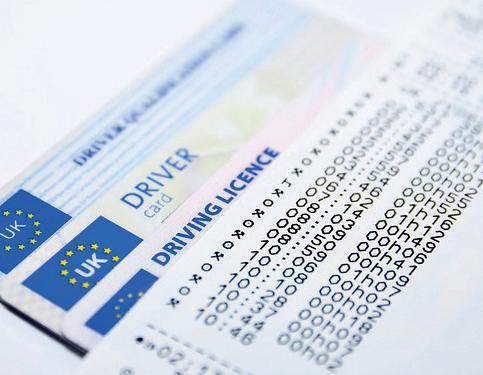
3 minute read
Driver hours: are you compliant?
from AccessPoint Issue 10
by AccessPoint
In industries such as construction, where the operative rarely drives for a living, an error in exceeding the allowed driving hours can occur simply because of ‘not being in the know’. Heba Najib from transport management consultancy GVL Management Limited sets out the all-important rules on drivers’ hours.
Construction workers, including scaffolders, are often under the impression that a tachograph is not needed. But this is often a misunderstanding because a tachograph must be used if the vehicle driven comes under EU or AETR (European Agreement Concerning the Work of Crews of Vehicles Engaged in International Road Transport) rules. This inexperience or lack of awareness of the rules has often led scaffolders to either think that they do not require a tachograph or not place importance on downloading or analysing the tachograph’s data.
This is an important aspect of remaining compliant with a company’s operator’s licence and rules on drivers’ hours. While some may deem this a simple error, this infringement could potentially lead to a Public Inquiry or revocation of the licence.
Recent data findings of tachographs revealed that the most common infringements are inadequate breaks in the day, the daily drive limit being surpassed, going above the maximum working hours in the week, and unsatisfactory daily rests.
Know the rules
It is essential for access and scaffolding contractors to be acutely aware of the rules and definitions for drivers’ hours. They are there for safety: safety of the driver, safety of other motorists and safety of pedestrians. Compliance with drivers’ hours rules is important, not only to ensure a company’s operator’s licence is not at risk but also to affirm and establish that a business cares about the safety of its drivers and other road users. When driving a goods vehicle or a passenger-carrying vehicle, the rules regarding drivers’ hours must be adhered to. AETR rules, EU rules and GB domestic rules are the three sets of rules that may pertain to a driver’s journey. Depending on the country a driver is driving in, what a driver is using the vehicle for and the type of vehicle they are operating, these rules will apply.
In most cases, scaffolders will be required to adhere to either the EU rules or the GB domestic rules for drivers’ hours.
The EU rules apply if the maximum permissible weight of the vehicle or vehicle combination is more than 3.5 tonnes. In addition to this, the rules will pertain if driving in the EU (currently including the UK), a European Economic Area country or Switzerland.
EU rules on drivers’ hours:
• You must not drive more than o nine hours in a day (which can be extended to 10 hours twice a week) o 56 hours within a week o 90 hours in any two consecutive weeks
Core EU rules on breaks and rest:
• You must take, at the minimum, 11 hours of rest every day (which may be reduced to nine hours of rest, three times between any two weekly rest periods)
• There must be a rest period of 45 hours every week, which is undisturbed (this also may be reduced to 24 hours every other week)
• After four hours and 30 minutes, the driver should take one break or a number of breaks equal to 45 minutes at the minimum
• After six consecutive 24-hour periods of working, a weekly rest must be taken, starting from the end of the last weekly rest period taken Scaffolding contractors might be exempt from the EU rules if they operate a vehicle or combinations of vehicles with a maximum permissible weight of 7.5 tonnes or less used for carrying work equipment for the driver where the distance is less than 100km.
GB domestic rules
The GB domestic drivers’ hours rules apply to most passenger-carrying vehicles and goods vehicles that do not have to follow the EU rules. For goods vehicles, the daily driving limit is that you must not drive for more than 10 hours in a day on a public road or off-road if not during duty time. This covers areas including building work and civil engineering. Companies must also ensure that for the daily duty limit the driver does not exceed 11 hours in any working day. This limit doesn’t apply on any working day when the operative does not drive.
What is most important for drivers in regard to compliance is having the knowledge and awareness needed to be able to comply. More often than not, if a person is not aware of the definitions and rules of drivers’ hours, they will find it difficult to ensure compliance.
Prevention of incompliance is far better than dealing with enforcement from the DVSA (Driver and Vehicle Standards Agency) or, even worse, the outcome of an accident caused by a tired driver who’s driven for longer than the allowable hours.

